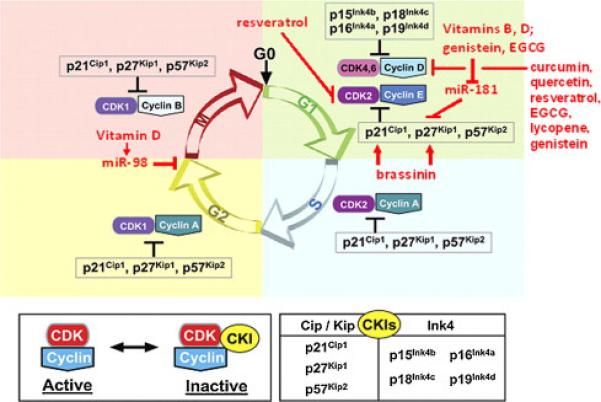Fig. 4.

Selected natural products that block cell cycle progression. Receptor activation, via Raf, MEK, ERK, and AP1, increases cyclin D1 transcription. Cyclin D1 binds to cdk4 and the assembly factor, p27Kip1 to create an active ternary complex. This complex can be inactivated by association with Ink4A or loss of cyclin D1 via GSK-3β-mediated proteasomal degradation. Active cyclin D-cdk4-p27 complexes phosphorylate (inactivate) Rb, causing limited transcriptional activation of cyclin E. Increased cyclin E levels shifts the balance of inactive cyclin E-cdk2 complexes to active cyclin E-cdk2 complexes, which in turn phosphorylates its associated p27, targeting it for proteasomal degradation. p27-free cyclin E-cdk2 complexes now fully phosphorylate Rb, causing S phase gene transcription, and progression into S phase, where the cell cycle proceeds independently of extracellular signals. As shown in red, many natural compounds cause G1 arrest in several cancer cell culture models, due to effects on cyclin D1, p21, p27 or cyclin E. Some of these act via altered expresson of microRNAs. Modified from reference [650].
